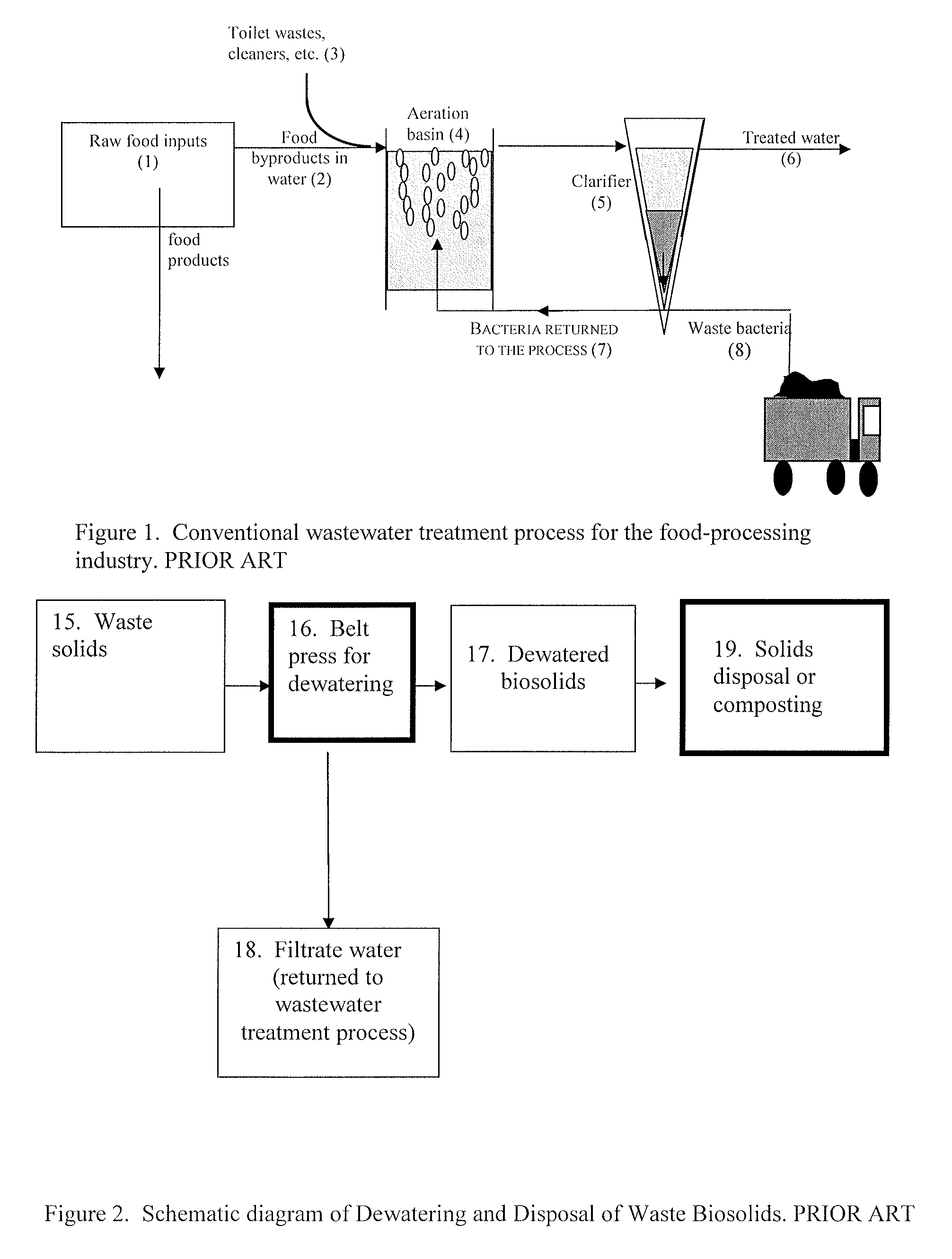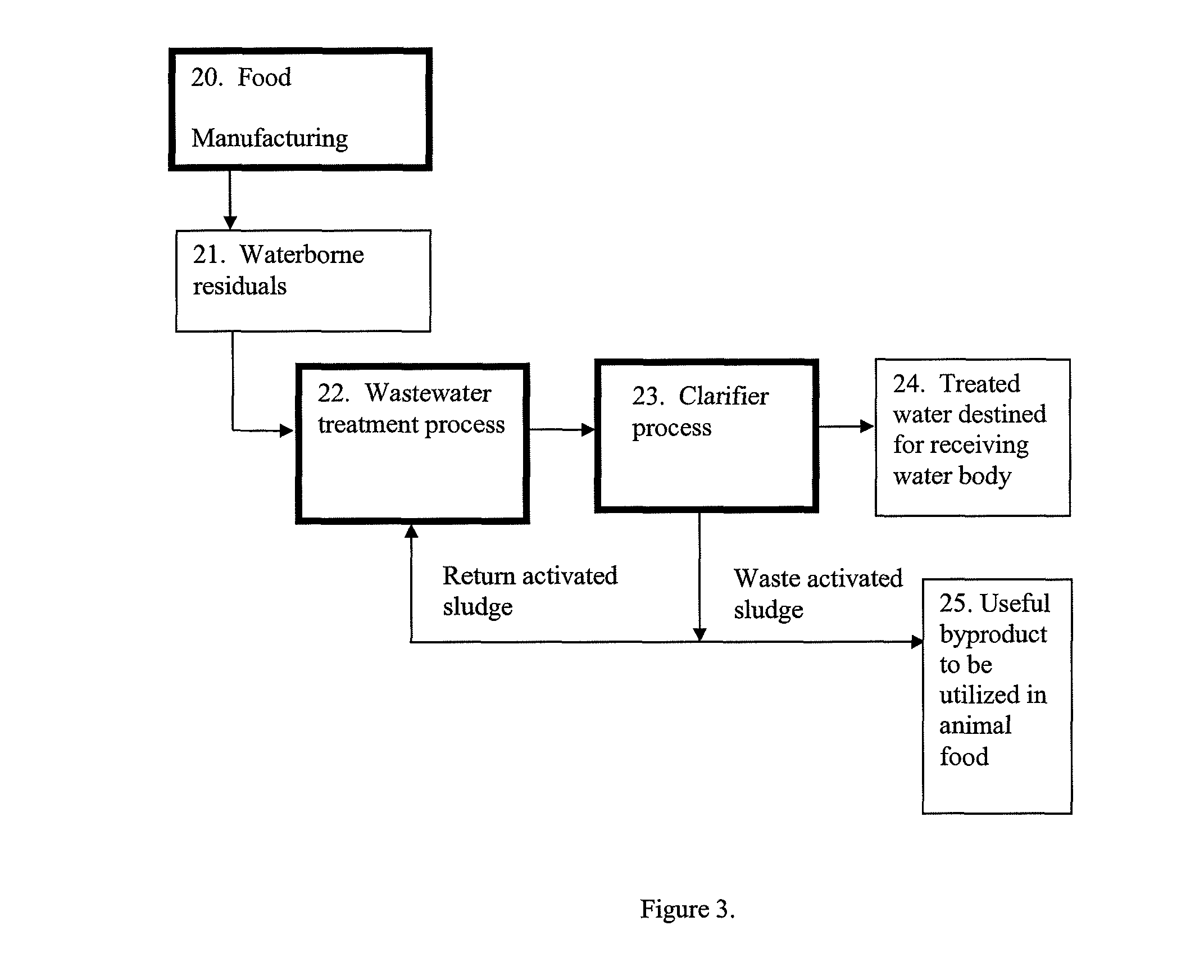Wastewater treatment method and apparatus, biosolids-based food additive, and business application
a technology of biosolids and food additives, applied in the direction of filtration separation, separation process, instruments, etc., can solve the problems of affecting the health of animals and humans, and affecting the quality of food
- Summary
- Abstract
- Description
- Claims
- Application Information
AI Technical Summary
Benefits of technology
Problems solved by technology
Method used
Image
Examples
example 1
[0151]Potato-processing and brewery byproducts were evaluated as models for food processing wastewater streams to produce biosolids. During a scientifically rigorous feeding trial, bacteria containing 40% protein were added to ground feed formulations at 0% (control Diet #1), 21.5% (Diet 2), and 43% (Diet #3) on a mass basis and extruded into pellets. (As a result, the bacterial cells contributed 0%, 8.4% and 16.8% of the total protein in final feeds.) Tilapia fingerlings (300 Oreochromis niloticus fry) were then grouped into “blocks” that consisted of small, medium, and large fish and were fed one of the three feeds. The growth results show that the fish receiving the bacterial protein grew at a faster rate than those receiving conventional ingredients alone (FIG. 9). At the completion of the experiment, the fish were euthanized and whole-body analyses were performed for Kjeldahl nitrogen (as a protein measurement), ash, and total fat. The averages of these analytical results and t...
example 2
[0153]A wastewater stream having a BOD level of 5000 mg / L (no anaerobic pretreatment) was introduced at a rate of 3 gallons per minute into an 8800 gallon continuously stirred tank reactor (CSTR) containing a mixed community of unidentified bacteria obtained from the aerobic basin of a wastewater treatment serving a brewery. Activated sludge was not returned to the aerobic basin so the hydraulic residence time (HRT) of approximately 2 days equaled the MCRT. The microorganisms were fed excess nitrogen and phosphorus in the form of urea and phosphoric acid, respectively, as well as an aqueous mixture of micronutrient metals as described herein. The micronutrients consisted of soluble aluminum compounds at a concentration of <1% by weight of the final mixture, boric acid at a concentration of <1% by weight of the final mixture, citric acid at a concentration of <1% by weight of the final mixture, cobalt sulfate at a concentration of 1-5% by weight of the final mixture, copper sulfate a...
PUM
| Property | Measurement | Unit |
|---|---|---|
| temperature | aaaaa | aaaaa |
| time | aaaaa | aaaaa |
| time | aaaaa | aaaaa |
Abstract
Description
Claims
Application Information
 Login to View More
Login to View More - R&D
- Intellectual Property
- Life Sciences
- Materials
- Tech Scout
- Unparalleled Data Quality
- Higher Quality Content
- 60% Fewer Hallucinations
Browse by: Latest US Patents, China's latest patents, Technical Efficacy Thesaurus, Application Domain, Technology Topic, Popular Technical Reports.
© 2025 PatSnap. All rights reserved.Legal|Privacy policy|Modern Slavery Act Transparency Statement|Sitemap|About US| Contact US: help@patsnap.com



